Kiteboarding Lessons in St. Petersburg Guide


Intro
St. Petersburg, known for its vibrant coastal life, is not just a historical city filled with culture and art, but also a hotspot for thrilling activities like kiteboarding. As more enthusiasts flock to its shores, the demand for kiteboarding lessons has surged, catering to both the curious beginner and seasoned rider. Understanding the diverse offerings becomes paramount to making the most out of your time on the water.
This guide will escort you through the myriad of options available for kiteboarding lessons in St. Petersburg. You’ll discover how to choose the right school, the significance of the local wind and water conditions, and essential tips to enhance your skills in this exhilarating sport. By the end, you will be well-prepared to embark on your kiteboarding journey, reaping the full benefits of what this dynamic city has to offer.
Gear Selection
When it comes to kiteboarding, having the right gear can make all the difference between a memorable day on the water and a frustrating one. Understanding what to look for can be quite the task. Let’s dive deeper into the essentials.
Types of Kites
Kites come in various shapes and sizes, designed for different wind conditions and rider preferences. Here’s a quick overview of the core types:
- Inflatable Kites: These are the most popular choice among kiteboarders. They are lightweight and easy to handle, making them suitable for a variety of skill levels. Inflatable kites tend to perform well in low wind conditions.
- Foil Kites: These kites offer better performance in light winds due to their ability to lift. However, they may require a steeper learning curve for those just starting out.
- Tubular Kites: Though less common, these kites can be a good choice for specialized conditions. Their design allows better stability, making them suitable for wave riding.
Selecting a kite also involves considering the size that fits with your weight and the wind conditions. As a rule of thumb, lighter riders might opt for smaller kites, especially in high winds, while heavier riders could benefit from larger kites in lighter wind.
Choosing the Right Board
The board you ride is just as important as the kite itself. The type of board you choose can vary greatly depending on your personal style and the conditions.
- Directional Boards: Designed for riding with the wind, these boards are favored for those that seek to ride waves.
- Twin Tip Boards: Perfect for beginners and freestyle riders, these are versatile and allow for riding in both directions.
- Straps vs. Boot: When it comes to choosing between straps or boots, it boils down to personal preference. Straps are easier to use, especially for newbies, while boots can provide advanced control and support for tricks.
Ultimately, investing in gear that feels comfortable and suits your style is key to enjoying your time on the water.
“The best kite is the one that complements your riding style and fits the conditions of the day.”
Being equipped with the right kite and board will empower you to not just learn, but truly enjoy the sport. With the right gear in hand, let's discuss how to refine your skills on the water.
Prologue to Kiteboarding
Kiteboarding, a thrilling water sport that combines elements from surfing, windsurfing, and paragliding, is not just a pastime; it’s a lifestyle that captures the imagination of adventurers around the world. This introduction sets the stage for understanding why kiteboarding is not only captivating but also a suitable sport for a diverse array of individuals. From adrenaline junkies seeking their next thrill to those drawn to the serene beauty of gliding over the waves, kiteboarding offers something for everyone.
Understanding the Sport
At its core, kiteboarding involves riding on a board while being propelled by a large kite that harnesses the wind’s power. This sport demands a keen understanding of wind patterns, water conditions, and safety protocols. Learning to kiteboard can be an exhilarating experience, as riders glide across the water, perform jumps, and navigate the environment with a grace that requires practice and skill. The learning curve might seem steep at first, but the satisfaction of mastering techniques is unmatched.
For newcomers, grasping the basic concepts of kite control is crucial. Riders must learn how to launch and land their kites, understand the significance of different wind directions, and how to maneuver their boards effectively. In many respects, kiteboarding is as much about mental adaptability as it is about physical prowess; riders often find themselves engaged in a constant dialogue with nature.
History and Evolution of Kiteboarding
The origins of kiteboarding can be traced back to the late 1980s and early 1990s. Initially inspired by various forms of kite flying and board sports, innovative enthusiasts like a small group of surfers began experimenting with kites to ride on water. Over the years, the sport has evolved significantly, both in terms of technique and equipment.
In those early days, makeshift boards were used, and safety measures were minimal. However, with advancements in technology and materials, kite designs have drastically improved, making them safer and easier to manage. The kiteboarding community has also expanded, creating a culture that values safety, respect for the environment, and camaraderie among riders.
Today, kiteboarding is not merely a water sport; it’s a booming industry filled with competitions, schools, and a global network of enthusiasts. It has pushed the boundaries of what is possible on the water and continues to draw in new riders every year, each eager to partake in the wind and waves.
Kiteboarding is not just about catching the wind; it's about catching your dreams and riding them into new horizons.
Why St. Petersburg for Kiteboarding?
When it comes to kiteboarding, location plays a pivotal role in the overall experience, and St. Petersburg stands out as a prime destination for enthusiasts. The city not only boasts beautiful scenic views but also combines a vibrant culture with favorable conditions for this thrilling sport. Understanding the reasons to choose St. Petersburg for kiteboarding underscores the importance of both geography and weather, elements that significantly enhance the learning and riding experiences.
Geographical Advantages
St. Petersburg offers unique geographical features that cater excellently to kiteboarding. The city's extensive coastline along the Gulf of Finland presents a diverse array of spots suitable for all levels of kiteboarders. From open bays to flatwater lagoons, there’s no shortage of options.
Some key geographical highlights include:
- Variety of Locations: Kiteboarders can explore spots like Kite Park Zelenogorsk, which is a favorite among locals. Each spot has its own character, ensuring that riders can switch up their routine and find the best conditions tailored to their skill level.
- Accessibility: The proximity of various launch sites to the city center allows for easy access. This is crucial for those who wish to maximize their time on the water without spending hours driving.
- Sandy Beaches and Flat Waters: Many kiteboarding areas are equipped with sandy beaches, making it easy for beginners to start learning. Flat waters provide an excellent platform to minimize tumbles for novices while also enabling advanced riders to practice tricks in a safer environment.
With such geographical perks, kiteboarding in St. Petersburg becomes less of a challenge and more of an exhilarating adventure.
Ideal Weather Conditions
The weather in St. Petersburg complements its geographical tapestry, making it an ideal setting for kiteboarding throughout the year. While summer is undoubtedly the prime season, understanding the local climate is essential for choosing the right times to hit the water.
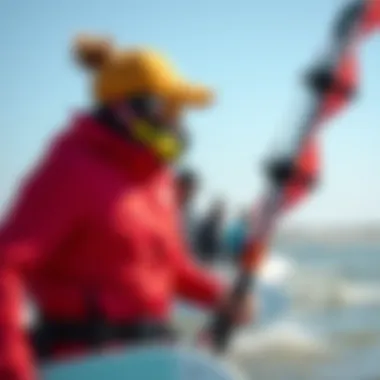
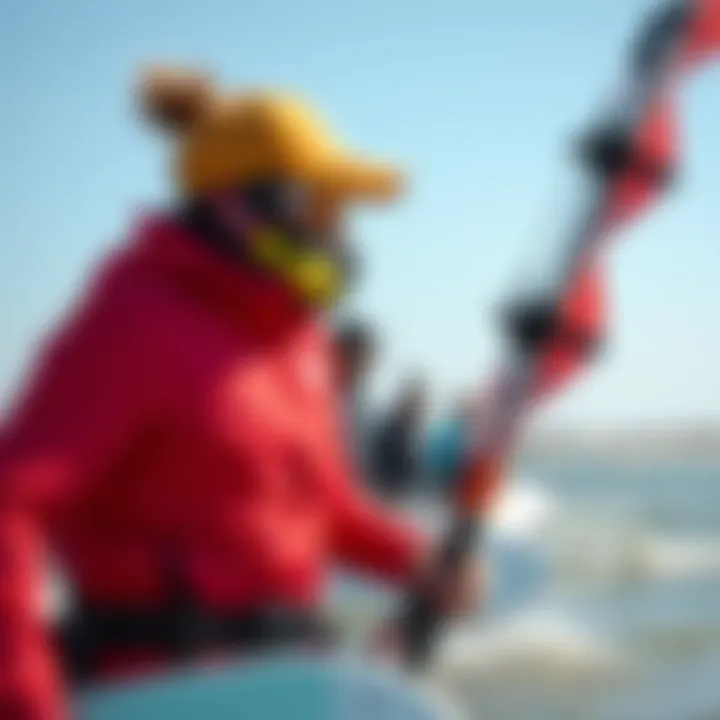
Key aspects to consider for weather include:
- Consistent Winds: St. Petersburg enjoys steady winds due to its seaside location. The average wind speed is often sufficient for kiteboarding, and the sea breezes that arrive during summer afternoons can transform an already pleasant day into an absolute thrill ride.
- Warm Temperatures: Summer temperatures often range between 20°C and 25°C (68°F to 77°F), striking a balance that keeps the water inviting and the riders comfortable. The relatively mild climate allows for extended sessions on the water without worrying too much about the chill.
- Seasonal Variety: The winter months may not appeal to all, but for those willing to brave the cold, kiteboarding can continue with thrill-seekers enjoying the pure gusty winds that this season brings. Alternatively, spring and autumn can offer brisk conditions ideal for more experienced riders seeking a bit of a challenge.
Choosing the Right Kiteboarding School
Selecting an ideal kiteboarding school is not just about picking a place on a map. It's a critical step that can make or break one’s learning experience. The right school can offer guidance, expertise, and a supportive environment that tailors the learning process to individual needs. For anyone serious about diving into the world of kiteboarding, understanding the nuances of this choice becomes paramount.
A good school should not only provide lesson packages but also ensure that the instructors are well-trained and have a genuine passion for teaching. After all, a patient and knowledgeable instructor often bridges the gap between confusion and skill development. As kiteboarding can seem daunting at first, the right guidance can ease initial fears and help one progress smoothly.
Key Factors to Consider
When browsing for a kiteboarding school, several key factors merit attention:
- Qualified Instructors: Check credentials and experience. Are the instructors certified by relevant national or international kiteboarding organizations? This indicates a level of professionalism and skill.
- Facilities and Equipment: The condition of equipment matters. Reliable and up-to-date gear ensures safety and enhances the learning experience. Schools with their own equipment often offer rental options, which is a considerable benefit.
- Location: Proximity to spots ideal for learning is crucial. Wind patterns, water depth, and local traffic should all influence your choice. If the school is located near suitable conditions, you can expect more productive lessons.
- Class Size: Smaller classes usually mean more personalized instruction. A low student-to-teacher ratio allows for tailored guidance, which is especially beneficial for beginners.
- Cost Structure: Compare lesson packages and what's included. Sometimes paying a little extra can provide a significantly better experience.
Taking the time to assess these factors not only sets up a novice for success but also enhances safety and enjoyment throughout the learning process.
Reputation and Reviews
Before committing, digging into reviews and testimonials can provide insight into the school's strengths and weaknesses. Engaging with past students' experiences can help potential kiteboarders avoid any pitfalls that might not be obvious at first glance. Here’s a few strategies to investigate:
- Social Media Buzz: Platforms like Facebook and Instagram can shed light on real-time experiences and recent activities within the kiteboarding community. You can often catch chats, photos, and videos from the school and its students posting their progress.
- Kiteboarding Forums: Websites like Reddit have threads where kiteboarding enthusiasts share their experiences and recommendations. Look for local threads where individuals discuss schools or instructors in St. Petersburg.
- Google Reviews and Trustpilot: Reading reviews on these platforms often reveals trends about a school’s reputation. Focus on consistent praise or complaints, as they usually highlight strengths or serious issues that might affect the learning experience.
If you come across glowing reviews or a particularly well-respected instructor, it's worth considering the school. A strong reputation often correlates with quality instruction and a positive learning environment.
Connecting with other kiteboarders and instructors can significantly enrich your learning experience. The kiteboarding community thrives on shared knowledge and support.
Types of Kiteboarding Lessons Available
When setting out on your kiteboarding journey in St. Petersburg, understanding the available lesson types is crucial. Different levels of ability and various learning preferences come into play, making it essential to find something that aligns with your individual needs. Here, we’ll delve into the broad spectrum of kiteboarding lessons available, walking you through what to expect based on your experience level.
Beginner Lessons
For those just dipping their toes into the world of kiteboarding, beginner lessons are where it all starts. These classes are designed to familiarize newcomers with the essential concepts of the sport, ensuring a solid foundation.
In these lessons, you will learn about the different types of kites, control characteristics, and fundamental safety practices. Training typically begins with understanding wind dynamics and how to launch and retrieve a kite—skills that may seem rudimentary but are absolutely vital. You’ll also begin practicing body dragging, which is a key skill in getting comfortable on the water. These lessons are often structured in a way that allows plenty of one-on-one instruction, providing a safe environment for you to ask questions and receive immediate feedback.
"The first time I flew a kite, it felt like a dance between me and the wind. I realized that kiteboarding felt less like a sport and more like a creative collaboration with nature."
Intermediate and Advanced Training
Once you have grasped the basics, intermediate and advanced training opens the door for enhancing your skills. These lessons will take you beyond merely staying afloat and start introducing jumping techniques, tricks, and improved control over the kite.
During intermediate sessions, expect to learn how to ride upwind effectively, which is an essential skill for any rider. The trainers will also expose you to different styles of riding, such as freestyle or wave riding, that are predominant in the sport.
Advanced classes cater to those who are keen on fine-tuning their technique or learning complicated maneuvers. Here, you might spend time working on specific tricks, perfecting your jump height, or simply refining your riding style. The learning curve can feel steep, but with focused practice and guidance, you'll find yourself progressing rapidly.
Private vs. Group Lessons
Choosing between private and group lessons can significantly affect your learning experience. Private lessons offer a tailored approach, perfect for those who prefer personalized instruction and rapid feedback. Here, the focus is on you, allowing instructors to adapt their teaching style to your needs. This can be especially beneficial if you're struggling with a specific aspect of the sport or simply want to advance quicker.
On the other hand, group lessons can foster a sense of community and camaraderie among novice riders. Sharing the experience with others can enhance the learning process, as you may find encouragement and support from fellow learners. However, the downside may include less direct attention from instructors and possibly a slower learning pace, depending on the group size. Ultimately, choosing between these options depends on personal taste and learning style.
Essential Gear for Kiteboarding
When diving into the world of kiteboarding, selecting the right gear is crucial. The equipment you use can significantly affect your overall experience and proficiency. It’s not just about looking cool on the water—having suitable gear can make the difference between an enjoyable day and a frustrating one. Here, we’ll take a closer look at the essential components of kiteboarding gear and where you can acquire them in St. Petersburg.
Understanding Equipment Components
To fully embrace the kiteboarding lifestyle, it's essential to understand the different equipment components. Each piece serves a unique purpose and plays a critical role in both safety and performance:
- Kite: The heart of kiteboarding. Kites come in various shapes and sizes for different wind conditions and rider skills. Beginners might opt for a larger, more stable kite, while seasoned riders could prefer a smaller one that maneuvers quickly.
- Control Bar: This is what you use to steer the kite. It connects the lines to the kite and allows you to navigate effectively. Make sure to choose a control bar that matches your kite size for optimal performance.
- Lines: Typically made from high-strength materials, the lines connect the kite to the control bar. Properly cared-for lines ensure safety and longevity.
- Harness: Worn around your waist or seat, the harness transfers the kite's pull to your body. It’s vital for comfort and to prevent injury.
- Board: The board you ride on varies based on your skill level and style. Options include directional boards for surfers and twin-tips for more versatile riding.
- Safety Equipment: This should never be overlooked. A helmet and impact vest can provide essential protection, especially for beginners. The water can be unforgiving, so it’s wise to prioritize safety.
In looking at these components, it's clear that understanding their functions is key for both safety and efficiency while riding.
Where to Buy or Rent Gear in St. Petersburg
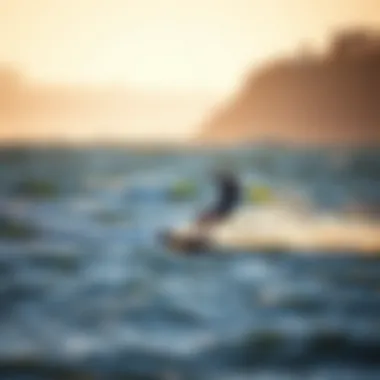
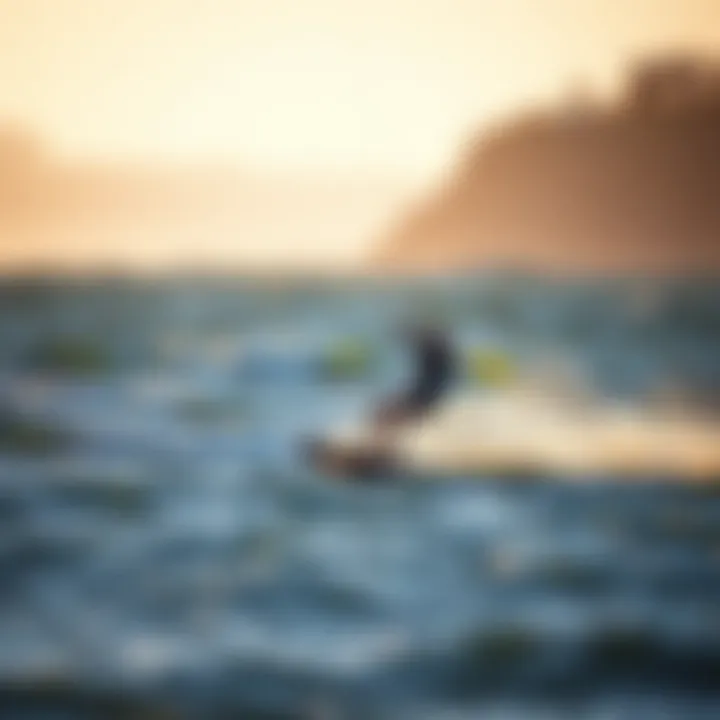
Whether you’re just starting or looking to upgrade your setup, figuring out where to get gear in St. Petersburg doesn’t have to be tricky. There are several options to consider:
- Local Kite Shops: St. Petersburg boasts several dedicated kiteboarding stores. Here, you can get hands-on advice from experienced staff, who can provide insights tailored to your skill level.
- Online Retailers: Websites like Kiteboarding.com and Evo.com offer a wide range of equipment, often at discounted prices. Just be cautious to check reviews and return policies before making a purchase.
- Rental Services: If you're not ready to commit to buying, consider renting equipment from local schools or shops. Many kiteboarding schools in St. Petersburg allow you to rent gear, making it easier to test various equipment before deciding what suits you best.
- Community Events: Keep an eye on local kiteboarding events or community gatherings. Sometimes, local riders sell second-hand gear, which is a great way to find quality equipment at a fraction of the price.
Finding the right gear is like laying the foundation for your kiteboarding journey. With the right equipment, you'll be set to hit the waves (or at least the breezy flats) and make the most of your experience in St. Petersburg.
Safety Protocols in Kiteboarding
Kiteboarding is an exhilarating sport that demands a unique set of skills and awareness. However, as thrilling as it may be, safety should remain at the forefront of every kiteboarder's mind. Understanding and adhering to safety protocols can make the difference between an enjoyable experience and a tragic mishap. In St. Petersburg, where both locals and tourists engage in this water activity, proper safety measures are particularly relevant. They safeguard not only the participant but also bystanders and the local marine environment.
Understanding Local Regulations
Before taking to the waters, kiteboarders must familiarize themselves with local regulations governing the sport. In St. Petersburg, these regulations cover a range of aspects, including:
- Designated Kiteboarding Zones: Certain areas are designated for kiteboarding, ensuring that riders stay clear of crowded beaches and boating traffic. Knowledge of these zones helps minimize accidents and enhances the overall experience of both kiteboarders and spectators alike.
- Permits and Insurance: Some regions may require kiteboarders to obtain permits or proof of insurance. It's wise to check in advance with local authorities or kiteboarding schools to ensure compliance. This could save you from unnecessary fines or even the cancellation of your session.
- Rutines for Safety: Regulations may outline specific protocols to follow when launching and landing your kite. This may include having a designated spotter to assist, especially in busy locations. Following these guidelines promotes a culture of safety and awareness in the kiteboarding community.
Being acquainted with these rules not only ensures safety but also fosters positive relationships within the local community. Experienced riders and instructors can often guide newcomers about these regulations, further emphasizing the importance of collaboration.
Safety Equipment and Considerations
The right gear is essential for every kiteboarder, especially in a sport where conditions can change in the blink of an eye. Here are some key pieces of safety equipment and considerations that every kiteboarder should keep in mind:
- Personal Flotation Devices (PFDs): Always wear a PFD that is suitable for the water conditions. This not only enhances buoyancy but also provides warmth and additional protection against impacts.
- Helmet: Protecting your head is crucial in kiteboarding. A properly fitted helmet can prevent serious injuries during falls or collisions with equipment or the water.
- Leash: A reliable leash keeps the kite attached to the rider, preventing it from getting lost or causing harm to others in the vicinity. Ensure your leash is in good condition before heading out.
- Quick Release System: A functioning quick release system allows the rider to detach themselves from the kite in emergencies. Test this mechanism frequently to ensure it operates smoothly.
"Prevention is better than cure."
- Emergency Kit: Bring an emergency kit that includes a rescue whistle, a signal mirror, and a small first-aid pack. These items can serve valuable purposes if something goes awry.
In addition to having the correct gear, regular training on how to use that equipment effectively is paramount. Knowledge of first aid and emergency procedures can enhance safety for you and fellow kiteboarders. Ultimately, kiteboarding in St. Petersburg can be a safe and enjoyable experience when riders commit to understanding local regulations and utilizing appropriate safety equipment.
The Learning Process
Learning how to kiteboard isn't just about a rush of adrenaline or riding waves; it serves as a cornerstone for those looking to develop both skills and safety awareness. Understanding the learning process can help riders, whether new or seasoned, avoid pitfalls and progress seamlessly.
Timeline for Progression
A structured timeline is essential for mastery in kiteboarding. Most beginners can expect to ride confidently within 3 to 5 lessons but individual timelines vary based on commitment, athletic ability, and prior experience in similar sports. Each lesson typically lasts 2 to 4 hours, focusing on foundational skills before moving into advanced techniques. Here’s a general outline for what to expect:
- Lesson 1 – Introductory Session
- Lesson 2 – Kite Control
- Lesson 3 – Body Dragging
- Lesson 4 – Board Riding Basics
- Lesson 5 and Beyond – Refinement and Advanced Skills
- Focus: Understanding equipment and basic safety.
- Duration: 2 hours.
- Outcome: Familiarity with the kite and the basics of launching.
- Focus: Ground handling and flying the kite.
- Duration: 2-3 hours.
- Outcome: Develop kite control on land, learning to steer and react.
- Focus: To get used to the water dynamics and pulling the body through the water with the kite.
- Duration: 2-4 hours.
- Outcome: Gaining confidence in the water, understanding steering through varying water conditions.
- Focus: Getting the board on feet and attempting to ride independently.
- Duration: 3-4 hours.
- Outcome: The joy of riding!
- Focus: Tricks, spins, and transitioning.
- Duration: Ongoing.
- Outcome: Hone skills further, refine techniques, and gain comfort in various conditions.
It’s vital to remember that some learn quicker than others. Patience is key.
Common Challenges and How to Overcome Them
Every kiteboarder hits a few bumps along the way. Being forewarned can save a ride from becoming a futile effort.
- Fear of the Water: Staring down the vast expanse can be intimidating. To overcome this, start with small, shallow waters where one can safely fall and practice.
- Equipment Woes: Getting tangled or confused about setup can put a damper on enthusiasm. Always communicate with instructors; they can provide tips on how to simplify the process.
- Understanding Wind Conditions: Kiteboarding is heavily dependent on understanding wind. Do not hesitate to ask about weather patterns from instructors or locals. They might have valuable insight into local quirks that can make or break a ride.
"Kiteboarding is not just about the ride; it's about understanding the elements that influence every moment spent on the water."
- Injury Risks: Accidents do happen. Always wear necessary protective gear. Tools like harnesses, helmets, and impact vests may seem cumbersome initially but they are lifesavers.
By addressing these challenges through education and practice, the journey to becoming a proficient kiteboarder becomes not just possible, but enjoyable. Riding isn't merely a goal; it transforms into a passion as one learns and grows alongside it.
For more resources regarding kiteboarding techniques and safety practices, visit Kiteboarding.org or explore forums on Reddit about Kiteboarding.
Learning kiteboarding opens doors to community, adventure, and a life filled with wind and waves.
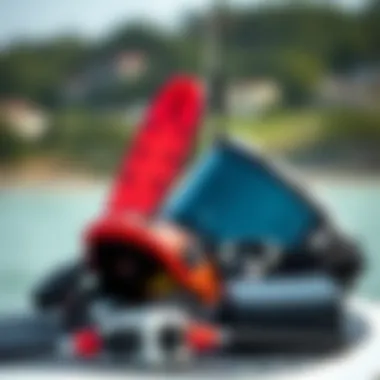
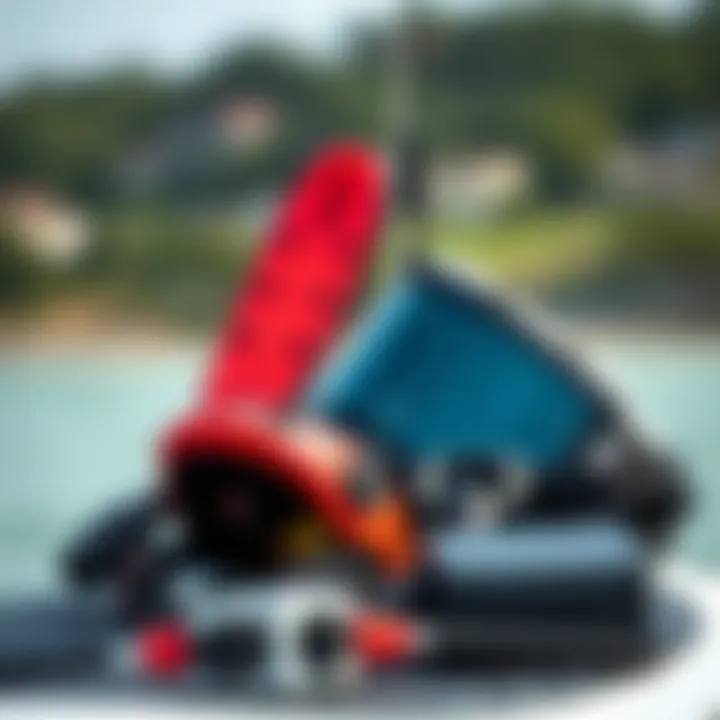
Environmental Considerations
Understanding the environmental implications of kiteboarding is crucial for both enthusiasts and instructors. In St. Petersburg, where natural beauty prevails, promoting a sustainable approach to this thrilling sport is vital. The interaction between kiteboarders and local ecosystems must be acknowledged, ensuring a balance between enjoyment and environmental stewardship. As the sport gains popularity, fostering a culture of respect for nature becomes increasingly important.
Impact of Kiteboarding on Local Ecosystems
Kiteboarding, while exhilarating, can significantly influence local ecosystems, especially in sensitive coastal areas. The act of launching and landing kites may disturb wildlife habitats, particularly for nesting birds and aquatic species. The need for awareness about these impacts cannot be overstated. Here are a few considerations to keep in mind:
- Habitat Disruption: Frequenting specific areas can lead to both flora and fauna disturbances. Preserving these natural habitats should be a priority.
- Pollution: Leaving behind trash or gear can harm both terrestrial and marine life. Practicing better waste management can mitigate this risk.
- Erosion: Repeated foot traffic in certain regions can lead to soil erosion, diminishing vegetation that stabilizes the ecosystem.
Protecting the environments that enhance our kiteboarding experiences requires active participation and mindful practices. Committing to being a responsible kiteboarder ensures that future generations can also enjoy these idyllic landscapes.
Responsible Kiteboarding Practices
To mitigate potential ecological impacts, following responsible kiteboarding practices is essential. Taking a few simple steps can contribute to the preservation of local ecosystems. Here are some suggestions:
- Choose Launch Sites Wisely: Opt for designated kiteboarding areas to reduce interference with wildlife. Understanding local regulations can help inform these choices.
- Follow Local Guidelines: Stick to the rules set by local authorities regarding kiteboarding. These guidelines often exist to protect wildlife and ecosystem integrity.
- Minimize Gear Neglect: Pack out what you pack in. Simple actions like keeping the beach clean and ensuring all gear is stowed properly can reduce pollution significantly.
- Educate Others: Share knowledge about the environmental effects of kiteboarding with fellow enthusiasts. Building a community focused on sustainability can foster positive changes.
By prioritizing responsible practices, kiteboarders can enjoy their passion while ensuring the preservation of the beautiful locales that make the sport possible.
In fostering a connection with nature, kiteboarders not only enrich their own experiences but also play a significant role in maintaining ecological balance. As this exciting sport continues to flourish in St. Petersburg, an unwavering commitment to environmental stewardship will help safeguard its future.
Community and Events
The kiteboarding community in St. Petersburg represents a vibrant tapestry of enthusiasts, instructors, and adventurers. Engaging with this community is not just about boosting one’s skills on the water; it’s about establishing connections that enrich the entire kiteboarding experience. In essence, the community and events surrounding kiteboarding serve as the backbone of the sport, allowing practitioners to learn from each other, share experiences, and cultivate friendships that often extend beyond the beach.
Being part of a community offers a plethora of benefits. First and foremost, it creates an environment that fosters learning. Newcomers can benefit from the wisdom of experienced kiteboarders who have navigated the rough waters of initial challenges. Workshops, meet-ups, and informal gatherings serve as excellent platforms for sharing tips and techniques, turning the learning process from solitary struggle into a collective journey.
Moreover, being involved in kiteboarding events such as competitions and local gatherings can significantly enhance one’s motivation and commitment to the sport. These occasions provide an opportunity to witness various styles and tricks, possibly sparking that flint of inspiration for your own progression. In this article, we will explore how to effectively connect with other kiteboarders and the significance of upcoming competitions and gatherings in fostering a sense of community.
Connecting with Other Kiteboarders
Building connections is crucial for any sport, and kiteboarding is no exception. St. Petersburg offers numerous ways to meet fellow enthusiasts, whether you’re a seasoned rider or a curious beginner. From kiteboarding schools to local clubs, avenues abound for making those all-important connections.
Many schools not only cater to lessons but also host community events. This means that after your lesson, you have the chance to meet like-minded people and even participate in group outings. Such connections can open doors to informal kiteboarding sessions, where learning happens not through instruction but through observation and practice together.
Online platforms play a vital role as well. Websites like Reddit and Facebook have dedicated groups where kiteboarders share their experiences, arrange get-togethers, or even discuss the latest trends in equipment. These social media channels keep the community active and engaged, allowing for instant feedback and support.
In addition, annual kiteboarding festivals often draw enthusiasts from various regions, creating an invigorating atmosphere of camaraderie. These festivals allow both novices and pros to mingle, gain insights, and be inspired by witnessing the remarkable feats of more experienced riders.
Upcoming Competitions and Gatherings
Events and competitions hold a special place within the kiteboarding calendar in St. Petersburg. Not only do they offer thrilling displays of skill, but they also bring an exhilarating energy that can be infectious for participants and spectators alike. Competitions can take various forms—races, trick contests, or freestyle events—making them exciting for all styles of kiteboarding.
One such anticipated event is St. Petersburg Kite Festival, usually held in the summer months. This gathering showcases local talents while also attracting international riders looking to make their mark. For those looking to compete, these events are not just a showcase of talent; they are opportunities for personal growth, testing skills against a diverse array of competitors.
Even if you’re not competing, attending these events allows you to absorb knowledge from watching seasoned professionals. It’s a unique chance to see what works and what doesn’t and maybe even come away with ideas for your own practice.
Additionally, many local schools or clubs host informal meet-ups on weekends to just get together, ride, or even just socialize. These less formal gatherings can be just as rewarding, providing a relaxed atmosphere to discuss gear, share tips, and build lasting friendships in the kiteboarding community.
Ultimately, the community and events surrounding kiteboarding in St. Petersburg are rich with opportunity. As you immerse yourself in this supportive network, you’ll find not only your skills advancing but also your passion for the sport becoming intertwined with the friendships developed along the way.
Closure: Embracing the Kiteboarding Lifestyle
The journey of kiteboarding extends beyond mastering the art of riding the waves; it symbolizes a lifestyle filled with adventure, connection, and continuous learning. Embracing this exhilarating pastime requires more than a penchant for adrenaline; it encompasses a commitment to both personal growth and fostering relationships within the global kiteboarding community.
Benefits of Continuous Learning
Continuous learning is central to becoming a skilled kiteboarder. Just like any sport, kiteboarding demands a dedication to improving one’s abilities and techniques. As kiteboarders advance, they often encounter new challenges—whether it's learning to jump higher, perform tricks, or navigate changing water conditions. This process fosters not only technical skills but also innovation in riding styles.
Moreover, engaging with lessons, workshops, and community events allows individuals to stay abreast of the latest trends and safety protocols, which can enhance both skill and enjoyment. Regularly updating one's knowledge and preserving a curious mindset keeps the enthusiasm alive and allows for more exhilarating experiences on the water. The following are a few key benefits of ongoing education in kiteboarding:
- Skill Enhancement: Each lesson builds upon the last, ensuring riders gain confidence progressively, which can lead to a safer and more enjoyable ride.
- Community Connection: Continuous participation creates bonds with fellow kiteboarders, leading to friendships and a support network that enriches the experience.
- Safety Awareness: Staying informed about best practices and safety measures can mitigate risks associated with the sport, ensuring fun times without unnecessary hazards.
"Kiteboarding is not just about the sport; it’s about the friendships formed and the memories made along the way."
Encouragement for Potential Riders
If you’ve ever been on the fence about kiteboarding, now is the perfect time to take the plunge! Becoming part of the kiteboarding community offers access to a vibrant culture filled with passionate individuals across all skill levels. It’s important to remember that every expert was once a beginner. Step one is usually stepping out of your comfort zone and trying a lesson or two.
When considering kiteboarding lessons in St. Petersburg, the city's vibrant waters paired with the support of experienced instructors can turn your initial trepidation into excitement. Here are some tips for potential riders to consider as they embark on this adventure:
- Start Slow: Take your time to learn the basics; it’s all part of the fun.
- Ask Questions: Instructors are there to help you. Don’t hesitate to seek clarifications on techniques or equipment.
- Practice Patience: Progress may take time, but that’s entirely normal. Enjoy each small victory along the way.
- Join Group Sessions: Learning with others can add an element of camaraderie and make the process more enjoyable.
By embracing kiteboarding as more than just a sport—seeing it as an ongoing journey of challenges and triumphs—you’ll likely find it rewarding in ways that go far beyond the initial thrill of riding the wind. Dive into this lifestyle, and who knows? You might just discover a second home on the water.















